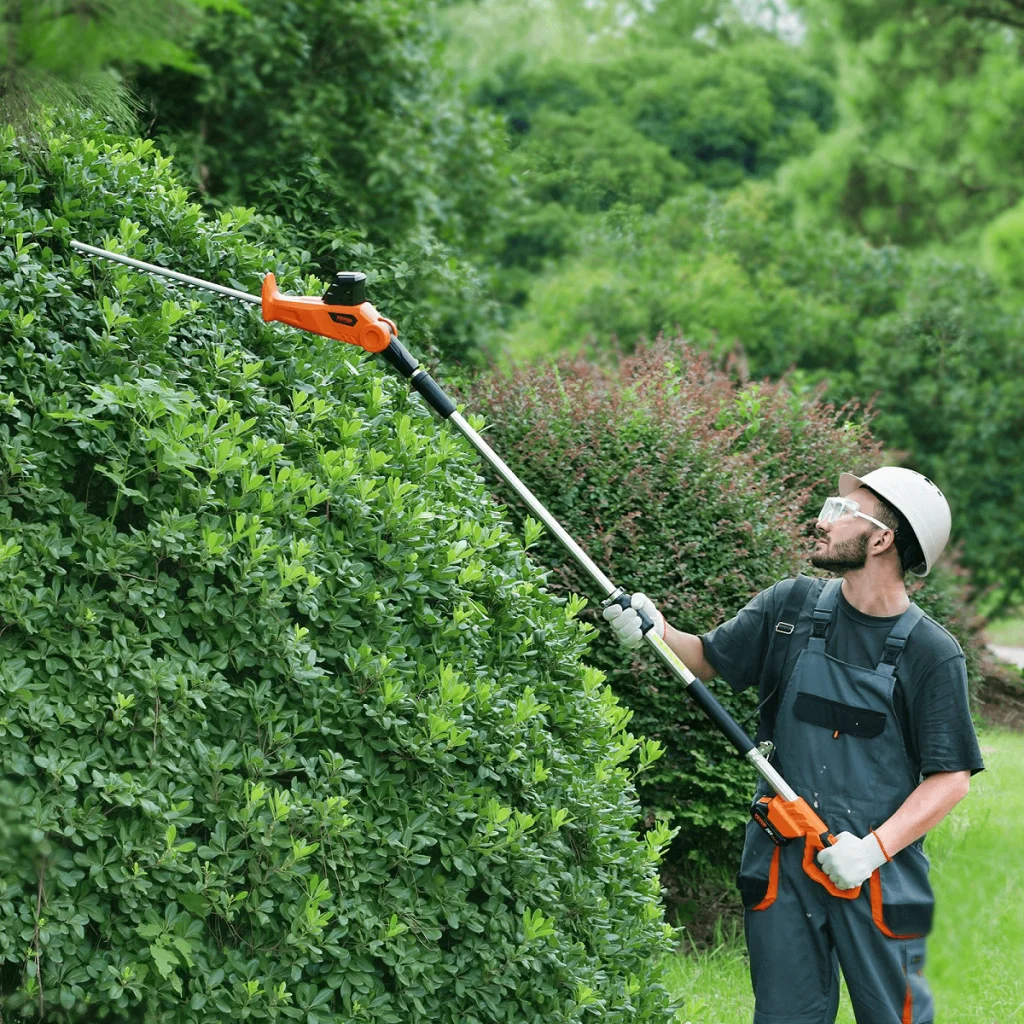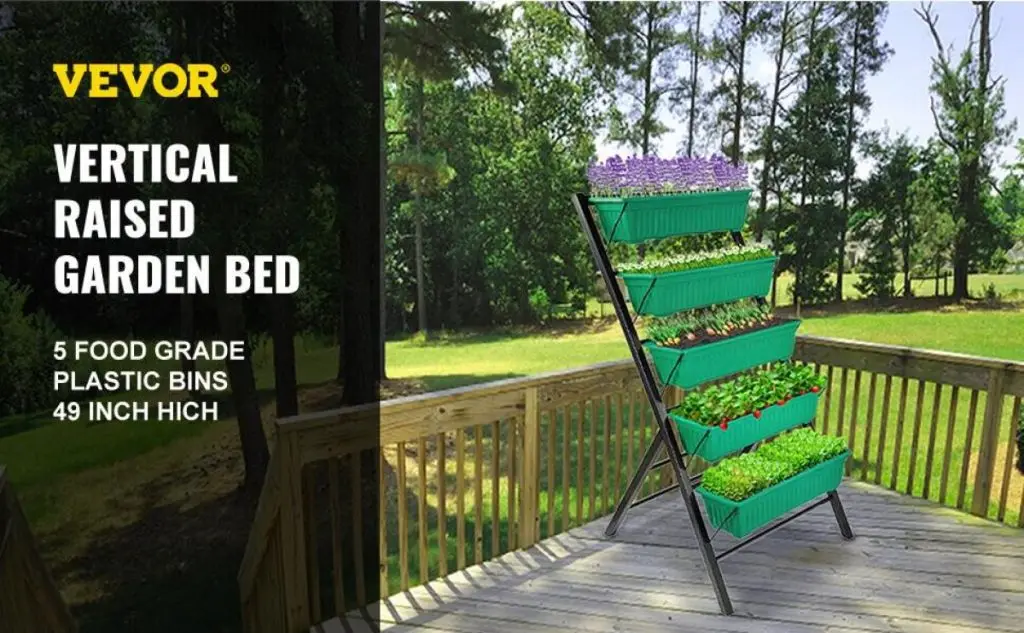If you’re looking to maintain the aesthetic appeal of your landscape and garden, then a hedge trimmer is one of the most valuable tools in your arsenal.
Hedge trimmers are simple yet functional tools that make it much easier to shape, prune, and trim hedges and bushes, and everything in between. It’s all about allowing you to keep a clean and neat appearance that your outdoor space requires.
Hedge trimmers have become extremely user-friendly, versatile, and efficient, with something like the VEVOR 20V Cordless Hedge Trimmer being a prime example of such advancements in technology. It comes complete with a variety of top-notch features that make using it as easy and safe as possible.
Today, we’re going to provide you with a guide on how to use a hedge trimmer. We’ll explain everything you need to know about hedge trimmers, including a step-by-step instruction on how to use them safely. Let’s get to it and find out how to use a hedge trimmer.
Table of contents
What Is a Hedge Trimmer?
A hedge trimmer is a special type of power tool that is designed for shaping, trimming, and pruning bushes, shrubs, and hedges. They are very different from manual hedge shears, which require a lot of physical effort, time, and skill.
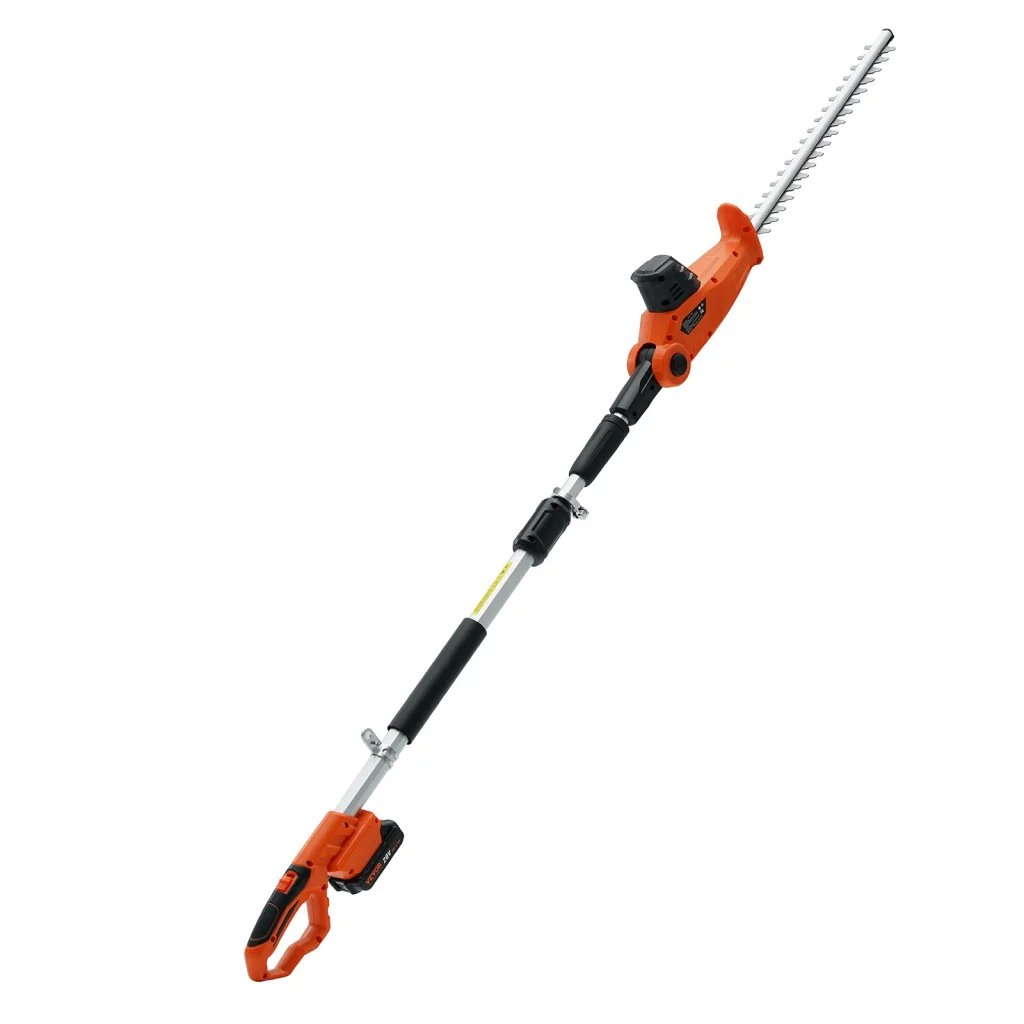
On the other hand, we have hedge trimmers, which use batteries, gasoline, or electricity to drive a motor that powers a reciprocating blade, therefore making it easy to cut through leaves, branches, and more. Keep in mind that there are of course battery, gas, and electricity-powered models, each one having its pros and cons.
However, cordless models, such as the one we mentioned in our opening paragraph, have become extremely popular for their great maneuverability and convenience. With cordless tremors, you don’t have to worry about power outlets, and they’re super portable as well.
What Do Hedge Trimmers Do?
The primary purpose of a hedge trimmer is to shape and trim shrubs and hedges, as the name implies. The main point is to keep your hedges and bushes from growing too large, while also keeping them looking polished and tidy. They’re able to cut through foliage, thick branches, and leaves alike, allowing for an efficient and precise cutting experience.
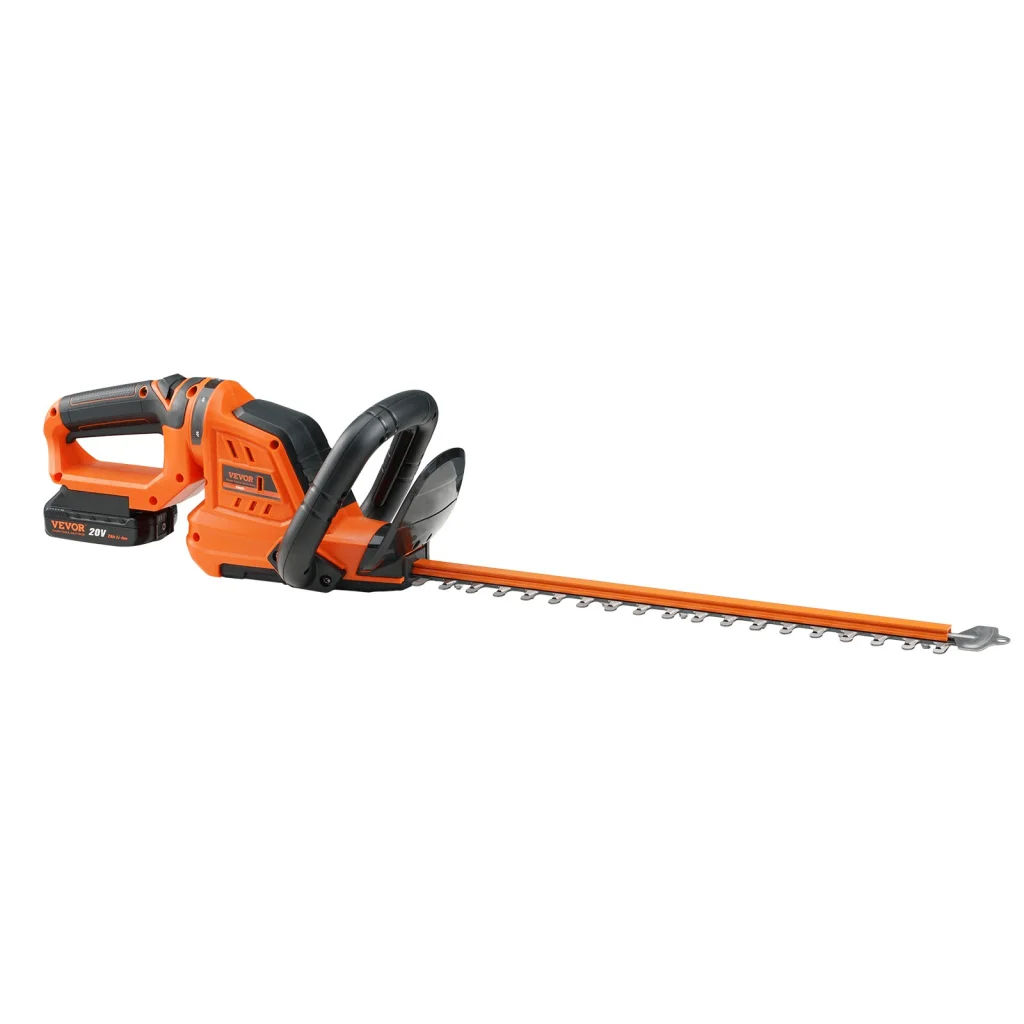
Keep in mind that trimming your bushes and hedges isn’t just for aesthetic appeal, but also helps keep the plants healthy by promoting new growth and preventing overgrown branches from becoming damaged or diseased.
Hedge trimmers may also be used for other small tasks, such as for trimming back overhanging branches or for clearing away small bushes. What’s cool is that some models even come with telescopic designs, which allow you to trim high branches and tall hedges without having to get up on a ladder.
How Do Hedge Trimmers Work?
Hedge trimmers work using a very simple principle, which is a reciprocating blade system. Here, there are two blades that move back and forth against each other in opposite directions. When the various sections of the blades meet each other, they easily cut through virtually anything in their path. They’re able to cut through leaves, branches, and more.
Technically speaking, not both of the blades move, as there is one moving blade and one fixed blade. Both of the blades have teeth, and when the teeth of the moving blade come into contact with the teeth of the fixed blade, it creates a cutting section. It’s almost like a pair of scissors.
How thick the branches can be cut is determined by the width of the teeth. Most standard hedge trimmers are able to cut branches up to 3/4 of an inch.
You then also need to consider the power source. For instance, there are electric, battery, and gas-powered models. Electric models are great for those who need something that will last all day without having to worry about batteries, whereas battery-powered models are far more portable.
With gas-powered models, you need to consider that they’re quite loud and pollute the environment, but they also have much more power behind them and are able to cut through thicker branches.
Recommended For Your Project
How to Use a Hedge Trimmer Safely: Step-by-Step
With all of the basics covered, we now want to teach you how to use a hedge trimmer safely in a step-by-step manner. Keep in mind, that the main point here is for us to help keep you safe.
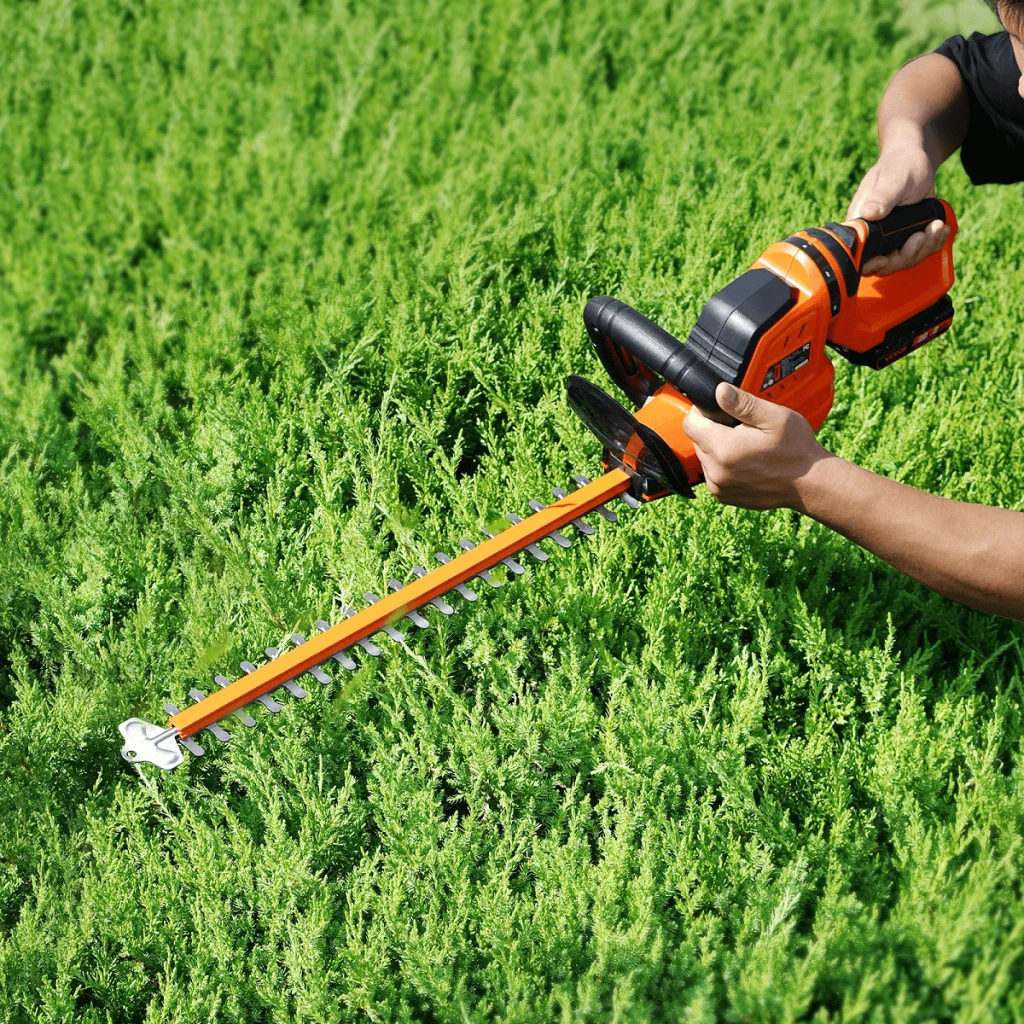
Step 1: Inspect the Trimmer
The first step in this process is to inspect your trimmer very thoroughly to make sure that it’s in good working order.
First and foremost, check that the power source is functioning properly. If you have a cordless model, you’ll want to make sure that the battery is fully charged. If you have an electric model, make sure that the power cord and connection points are working. Meanwhile, if you have a gas-powered model, make sure that you have gas in it.
You’ll also want to check the blades for any signs of damage or wear, as well as other components of the unit. As long as everything is in working order, you can move on to the next step.
Step 2: Wear PPE
One of the most important things that you need to do when using a hedge trimmer is to wear the appropriate protective or safety gear. First and foremost, flying debris is a big risk when using a hedge trimmer, and you therefore want to wear safety goggles to protect your eyes.
You’ll also want to wear sturdy gloves to prevent scrapes and cuts from happening to your hands, as this is also a common occurrence when using a hedge trimmer. You’ll then also want to wear long pants and sleeves to make sure that your limbs are shielded not only from the trimmer itself but also from sharp foliage and branches.
Furthermore, if you’re using a gas-powered model, you’ll also want to wear some hearing protection to protect your ears. Depending on where you’re working, you’ll also want to wear some non-slip boots or shoes to ensure that you’re perfectly stable while working with this power tool.
Step 3: Create a Plan of Action and Prepare the Area
You never just want to start trimming without first having a plan. You first want to decide on the height and shape of your hedges. Planning ahead will help make sure that you don’t miss any spots or trim, while also keeping you safe. You don’t want to make last-minute decisions while you’re standing up on a ladder, as this can put your safety at risk.
Furthermore, you also want to prepare the area. You don’t want to start trimming if there are any large obstacles in the way. Any large branches, debris, or hanging objects need to be removed from the area. Similarly, make sure that the walking path you’ll have to follow along the hedges is also clear. You don’t want to trip over something while you’re using this power tool.
Step 4: Holding the Trimmer Properly
Next, you also have to make sure that you hold the trimmer properly. This is one of the biggest dangers that many people face, and it’s generally due to a lack of knowledge. Yes, you want your grip on the handles to be comfortable, but also quite firm.
The vast majority of hedge trimmers all have two handles, and you want to keep your hands on both of them at all times. Furthermore, the vast majority of hedge trimmers also have a safety switch that you need to hold down while operating it in order to keep the blades running.
Therefore, when holding your trimmer, if not in use, do not engage the safety switch. If you’re ready to start trimming, hold down the safety switch, turn the unit on, and get to work.
Step 5: Start Trimming
Now you can actually start trimming your hedges. Generally speaking, you’ll actually want to start at the bottom, which goes against common sense, but this is the way it should be. If you start at the bottom, you’ll prevent falling branches from getting in your way and obstructing your view.
Furthermore, for the safest operation, make sure that you are holding the trimmer parallel to the hedges, and that you move it in very smooth motions.
Of course, cordless models like those from VEVOR make cutting much easier, as you don’t have to worry about a cord getting in your way. On that note, if you are using a corded model, be sure to keep the cord out of the way, or else you may cut through it.
Once the sides have been trimmed, you can then trim the top of the hedge. By using even and horizontal strokes, you can create a flat surface. Of course, if you’re working on taller hedges, you might need a ladder. With that being said, the VEVOR Hedge Trimmer comes with a telescopic feature, making it much easier to reach higher areas.
Something else to take note of is that you’ll want to take regular breaks. If you start feeling fatigued or your arms start getting tired, take a break for 5 or 10 minutes. If you are too fatigued when using one of these power tools, you might suffer an accident or make a mistake.
Step 5: Cleanup and Maintenance
Once you’re done trimming, you can then clean the area. You’ll want to use proper disposal methods to take care of all the branches and leaves that you’ve cut off of your hedges. Once that’s done, you’ll then want to clean the trimmer. Brush off all debris and leaves off of the blades and other areas of the trimmer. For long-term maintenance, you can also oil the blades.
FAQs
Let’s quickly answer some of your most frequently asked questions about using a hedge trimmer safely.
How often should my hedges be trimmed?
How often you should trim your hedges really depends on the growth rate of the plants and the type. With that being said, in most climates, trimming your hedges two or three times per year should be more than enough. However, if you’re looking to maintain a certain shape or aesthetic appeal, weekly or bimonthly trimmings may be necessary.
Can I trim hedges if they are wet?
If you have a powerful hedge trimmer, it is technically speaking possible. However, it is not recommended to trim wet hedges, because the branches and leaves might clump together, and this can make the operation dangerous, while also making it much more difficult to get clean cuts. If you’re using electric tools, wet conditions can also pose a serious risk of electric shock.
Is it possible to sharpen hedge trimmer blades?
Yes, hedge trimmer blades can be sharpened using a sharpening stone or file, or you can take them to a professional. Hedge trimmer blades should be sharpened at least once or even twice per season depending on how often you use the hedge trimmer.
Using a Hedge Trimmer: Final Thoughts
The bottom line is that hedge trimmers really aren’t overly difficult to use safely. They are far from being the most dangerous power tools in the world. As long as you inspect the machine, hold it properly, and wear the right safety gear, you should be perfectly fine. Remember that VEVOR has some excellent models to consider, such as this Fast-Charging VEVOR 20V Cordless Hedge Trimmer.

